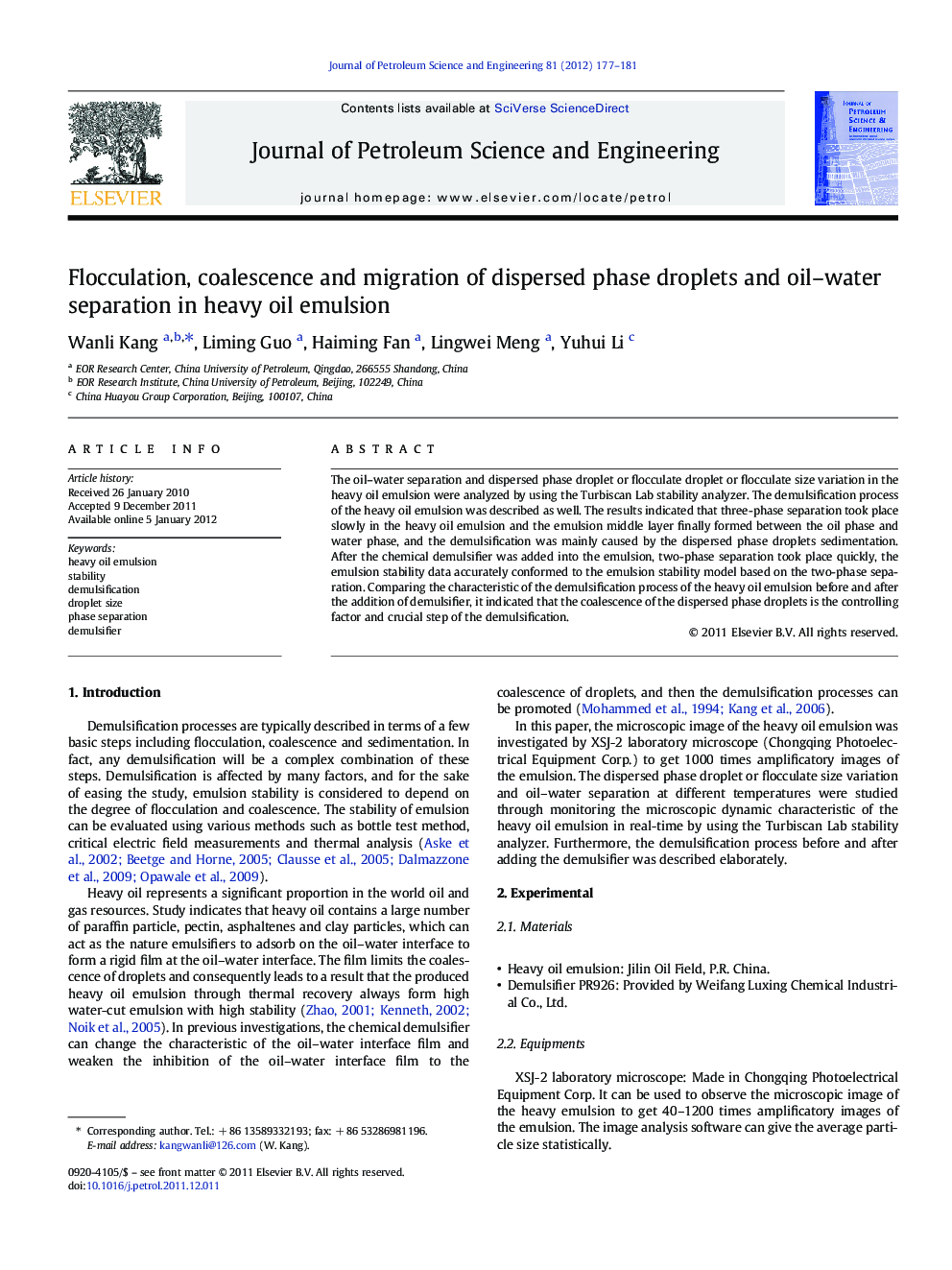| Article ID | Journal | Published Year | Pages | File Type |
|---|---|---|---|---|
| 1755602 | Journal of Petroleum Science and Engineering | 2012 | 5 Pages |
The oil–water separation and dispersed phase droplet or flocculate droplet or flocculate size variation in the heavy oil emulsion were analyzed by using the Turbiscan Lab stability analyzer. The demulsification process of the heavy oil emulsion was described as well. The results indicated that three-phase separation took place slowly in the heavy oil emulsion and the emulsion middle layer finally formed between the oil phase and water phase, and the demulsification was mainly caused by the dispersed phase droplets sedimentation. After the chemical demulsifier was added into the emulsion, two-phase separation took place quickly, the emulsion stability data accurately conformed to the emulsion stability model based on the two-phase separation. Comparing the characteristic of the demulsification process of the heavy oil emulsion before and after the addition of demulsifier, it indicated that the coalescence of the dispersed phase droplets is the controlling factor and crucial step of the demulsification.
► The oil–water separation and disperse phase droplet or flocculate size variation in the heavy oil emulsion were analyzed by using the Turbiscan Lab. ► After the chemical demulsifier was added into the emulsion, two-phase separation took place quickly; the emulsion stability data accurately conformed to the emulsion stability model based on the two-phase separation. ► Phase separation took place slowly in the heavy oil emulsion and the emulsion middle layer finally formed between the oil phase and water phase, and the demulsification was mainly caused by the dispersed phase droplets sedimentation.
